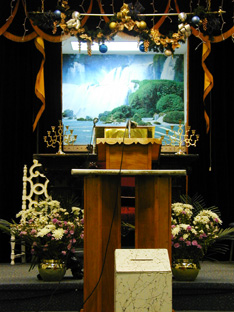MANUS-CURE
1998
Emiko Kasahara
مپ“مپ®ن½œه“پâ€MANUS-CUREâ€مپ¯ï¼‘ï¼گ5ï¼گ色مپ®مƒمƒ‹م‚مƒ¥م‚¢مپ®ه®ںéڑ›مپ®è‰²مپ¨مپمپ®è‰²مپ«مپ¤مپ‘م‚‰م‚Œمپںهگچه‰چمپŒن½؟م‚ڈم‚Œمپ¦مپ„م‚‹م€‚色مپ®هگچه‰چم‚’è¾و›¸مپ®م‚ˆمپ†مپ«م‚¢مƒ«مƒ•م‚،مƒ™مƒƒمƒˆé †مپ«مپھم‚‰مپ¹م€پ色見وœ¬ه¸³مپ®م‚ˆمپ†مپ«مپم‚Œمپم‚Œمپ®è‰²م‚µمƒ³مƒ—مƒ«مپ¨ه…±مپ«و•´ç„¶مپ¨é…چç½®مپ•م‚Œمپ¦مپ„م‚‹م€‚ن½œه“پمپ¯ه…¨éƒ¨مپ§ï¼“ï¼گمƒڑمƒ¼م‚¸مپ‹م‚‰مپھم‚ٹم€پèپ–و¯چمƒمƒھم‚¢مپ®و‰‹م‚’用مپ„مپںمƒ‰مƒمƒ¼م‚¤مƒ³م‚°ï¼‘مƒڑمƒ¼م‚¸مپŒو·»مپˆم‚‰م‚Œم€پ磨مپچمپ‚مپ’م‚‰م‚Œمپں金ه±è£½مپ®ç®±مپ«هڈژم‚پم‚‰م‚Œمپ¦مپ„م‚‹م€‚مپ“مپ®ن½œه“پم‚’é–‹مپ‘م‚ˆمپ†مپ¨مپ™م‚‹ن؛؛مپ¯م€پن¸په؛¦مپٹهŒ–粧م‚’مپ™م‚‹و™‚مپ®م‚ˆمپ†مپ«è‡ھهˆ†مپ®é،”مپ¨م€پمپ¾مپڑم€په¯¾é¢مپ™م‚‹ن؛‹مپ«مپھم‚‹م€‚
مƒمƒ‹م‚مƒ¥م‚¢مپ¨مپ„مپ†è¨€è‘‰مپ¯MANUSمپ¨CUREمپ¨مپ„مپ†ن؛Œمپ¤مپ®مƒ©مƒ†مƒ³èھم‚’èµ·و؛گمپ¨مپ™م‚‹è¨€è‘‰مپ‹م‚‰ه‡؛و¥مپ¦مپ„م‚‹م€‚MANUSمپ¯و‰‹مپ¨مپ„مپ†و„ڈه‘³مپ§مپ‚م‚‹مپ¨هگŒو™‚مپ«م€پمپ‹مپ¤مپ¦مƒمƒ¼مƒو³•مپ«مپٹمپ„مپ¦مپ¯ه¤«مپŒه¦»مپ«ه¯¾مپ—مپ¦وŒپمپ¤و¨©هˆ©م‚’م‚‚و„ڈه‘³مپ—مپںم€‚و‰‹مپ¯ن؛؛é–“مپŒم‚‚مپ®م‚’ن½œم‚ٹه‡؛مپ™و™‚مپ«ه؟…مپڑن½؟م‚ڈم‚Œم‚‹ن½“مپ®ه€‹و‰€مپ§مپ‚م‚‹ن؛‹مپ‹م‚‰م€پهٹ›م‚„و¨©هٹ›م‚’è±،ه¾´مپ¨مپھمپ£مپںمپ®مپ§مپ‚م‚‹م€‚مپم‚Œمپ«ه¯¾مپ—مپ¦CUREمپ¯و²»ç™‚مپ™م‚‹م€پç™’مپ™مپ¨مپ„مپ†و„ڈه‘³م‚’وŒپمپ£مپ¦مپ„م‚‹م€‚مپ“مپ®ن؛Œمپ¤مپ®èھمپŒمپ‚م‚ڈمپ•مپ£مپںâ€MANUCUREâ€مپ¯ه¥³و€§مپ®هŒ–粧ه“پمپ®ن¸€مپ¤م€پو‰‹مپ®çˆھمپ«ه،—م‚‹ه،—و–™م‚’مپ•مپ™م€‚
çڈ¾هœ¨ç™؛ه£²مپ•م‚Œمپ¦مپ„م‚‹ç„،و•°مپ®هŒ–粧ه“پمپ®ن¸مپ§م‚‚م€پمƒمƒ‹مƒ¥م‚م‚¢مپ¯ن¸€ç•ھèڈ¯م‚„مپ‹مپ§è±ٹه¯Œمپھ色و•°م‚’م‚‚مپ،م€پمپم‚Œمپم‚Œمپ®è‰²مپ«و§کم€…مپھهگچه‰چمپŒمپ¤مپ‘م‚‰م‚Œمپ¦مپ„م‚‹م€‚é£ںمپ¹ç‰©م€پ風و™¯م€پو„ںوƒ…م€پم‚»مƒƒم‚¯م‚¹مپھمپ©م‚’è،¨çڈ¾مپ™م‚‹مپمپ®مƒگمƒ©م‚¨مƒ†م‚£مپ®ه؛ƒمپŒم‚ٹمپ¯وƒ³هƒڈم‚’è¶ٹمپˆمپ¦مپ„م‚‹م€‚مپ“مپ®و²¢ه±±مپ®è‰²مپ¨مپمپ®è‰²مپ«مپ¤مپ‘م‚‰م‚Œم‚‹هگچه‰چم‚’و³¨و„ڈو·±مپڈ見مپ¦مپ„مپڈمپ¨م€پمپمپ“مپ«مپ¯ن؛؛é–“مپŒن½œم‚ٹمپ مپ™م‚¤مƒ،مƒ¼م‚¸مپ®ه¤ڑو§کو€§م€پو§کم€…مپھو¬²وœ›م‚„è،ه‹•مپŒوک مپ—ه‡؛مپ•م‚Œمپ¦مپ„م‚‹مپ“مپ¨مپ«و°—مپŒن»کمپڈم€‚
وœ¬و¥م€پهŒ–粧مپ¨مپ¯ن½•è€…مپ‹مپ«مپھم‚چمپ†مپ¨مپ™م‚‹è،Œç‚؛مپ§مپ‚م‚ٹم€پن؛؛é،ه¦çڑ„و„ڈه‘³مپ§مپ®ه„€ه¼ڈçڑ„è¦پç´ مپŒه½“然مپ‚م‚‹م€‚مپ—مپ‹مپ—مپھمپŒم‚‰م€پن¸–ç•Œçڑ„مپھ物è³ھن¸ه؟ƒن¸»ç¾©مپ®çڈ¾ن»£مپ§مپ¯م€پهŒ–粧مپ¨مپ„مپ†è،Œç‚؛مپ®ن¸مپ«مپ¯م€پè‡ھهˆ†م‚’مپ‚م‚‹ه•†ه“پن¾،ه€¤مپ«é«کم‚پم‚ˆمپ†مپ¨مپ™م‚‹è³‡وœ¬ن¸»ç¾©çڑ„و¬²وœ›م‚‚ه¼·مپڈهکهœ¨مپ™م‚‹م€‚ م€€مپ“مپ®مپٹمپ³مپںمپ مپ—مپ„و•°مپ®مƒمƒ‹م‚مƒ¥م‚¢مپŒن½œم‚ٹه‡؛مپ™è‰²ه½©مپ®ه¤‰هŒ–مپ®é–“مپ«م€پم‚†م‚‹م‚„مپ‹مپ«وµ®مپ‹مپ³ن¸ٹمپŒمپ£مپ¦مپڈم‚‹م‚‚مپ®مپ¯م€پCURE-و²»ç™’-م‚’ه¾…مپ¤ç§پمپںمپ،è‡ھè؛«مپ®ه§؟مپ‹م‚‚مپ—م‚Œمپھمپ„م€‚ مƒمƒ«مƒپمƒ—مƒ«ن½œه“پم€‚
1999ه¹´م€Œè؛«ن½“مپ®ه¤¢م€چ(ن؛¬éƒ½ه›½ç«‹è؟‘ن»£ç¾ژè،“館م€پو±ن؛¬éƒ½çڈ¾ن»£ç¾ژè،“館)ه‡؛ه±• ن؛¬éƒ½ه›½ç«‹è؟‘ن»£ç¾ژè،“館هڈژ蔵
This multiple work “MANUS-CURE” contains 1050 colors of real nail polish and also their names. As in a dictionary, the names are in alphabetical order, and like a color sample book, are put together with the color specimens.
The 30 pages of colors and also a drawing in theimage of the Virgin Mary’s hands, are installed in a polished metal box. At first, as you open the box you will see your own face as though you are about to start making-up.
The word manicure consists of two words, manus and cure which have there origines in latin. Manus means hand and according to Roman law, indicated the right of the husband over the wife. Because the hand is an indispensable part of the body when human beings create things, it became a symbol of power and authority. However, cure means care and healing. The word made from these two words, “MANUCURE” points to a kind of cosmetic, i.e. the paint for hand nails.
Among innumerable cosmetics on the market, the nail polish has the most brilliant and rich variation of colors, and each color has a different name. Food, landscape, emotions, sex… the sheer breadth of expression is beyond our imagination. Looking carefully at all of those colors and their names, we can notice the flexibility of the images and hence, the many kinds of desires and impulses of mankind.
Originally, the act of making-up was used as a means of becoming somebody else, and this act can be traced to ceremonial elements within anthropology. However, in modern times, under the global influence of materialism, the act of making-up shows an apparent capitalistic desire to increase our own commercial value.
The lasting images therefore that move in and out of these countless colors of changing nail polish may in fact be our own figures who are longing for the CURE.
Exhibitions: 1999 “Visions of The Body-Fashion or Invisible Corset”,The National Museum of Modern Art, Kyoto, Japan,
Also traveled to the Museum of Contemporary Art, Tokyo, Japan
Collection: The National Museum of Modern Art, Kyoto, Japan
 |
 |
 |
 |
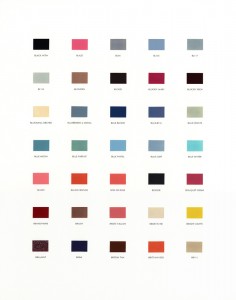 |
 |
 |
 |
 |
 |
 |
 |
Offering
2005-2014
Emiko Kasahara
م€ŒOfferingم€چمپ¨مپ¯è³½éٹم€په¯„ن»کم€په¯„進م€په–œوچ¨مپ®مپ“مپ¨مپ§مپ™م€‚م‚¤م‚؟مƒھم‚¢مپ®وœ‰هگچمپھو•™ن¼ڑمپ§ç¬ هژںمپŒمپµمپ¨ç›®مپ«مپ—مپںç¾ژمپ—مپ„م‚ھمƒ–م‚¸م‚§م€پمپم‚Œمپ«è؟‘مپ¥مپ„مپ¦مپ؟م‚‹مپ¨مپم‚ŒمپŒ Offering Box (賽éٹ箱)مپ§مپ‚مپ£مپںمپ“مپ¨مپ«é©ڑمپ„مپںمپ“مپ¨مپŒمپ“مپ®مƒ—مƒم‚¸م‚§م‚¯مƒˆمپ®ه§‹مپ¾م‚ٹمپ§مپ—مپںم€‚
و•™ن¼ڑمپ«ه…¥م‚‹مپ”مپ¨مپ«مپمپ® Offering Box م‚’観ه¯ںمپ—ه§‹م‚پم€پمپ¤مپ„مپ«مپ¯م€پن¸–ç•Œن¸مپ®و•™ن¼ڑم‚’ه·،م‚ٹم€پè³½éٹç®±مپ®ه†™çœںم‚’و’®م‚ٹç¶ڑمپ‘م‚‹مپ“مپ¨مپ¨مپھم‚ٹمپ¾مپ—مپںم€‚
ن»–者مپ®مپںم‚پمپ«ç§پè²،م‚’وٹ•مپ’ه‡؛مپ™مپ¨مپ„مپ†è،Œç‚؛مپ¯éڑ£ن؛؛مپ¸مپ®و„›مپ§مپ™م€‚مپ—مپ‹مپ—مپم‚ŒمپŒه€‹ن؛؛مƒ¬مƒ™مƒ«مپ§مپ¯مپھمپڈم€پو•™ن¼ڑمپ¨مپ„مپ†ç©؛é–“مپ§è،Œم‚ڈم‚Œم‚‹مپ¨مپ„مپ†مپ“مپ¨مپ¯م€پمپمپ®è،Œç‚؛مپ®ه¯¾ن¾،مپ¨مپ—مپ¦م€پو»ه¾Œمپ®ه¹³ه®‰م‚„ه¤©ه›½مپ¸مپ®هˆ‡ç¬¦م€پمپ‚م‚‹مپ„مپ¯مپ“م‚Œمپ‹م‚‰ه…ˆمپ®ن؛؛ç”ںمپ®ه¹¸ç¦ڈمپ«ن½•م‚‰مپ‹مپ®ن؟証م‚’و±‚م‚پم‚‹è،Œç‚؛مپ§م‚‚مپ‚م‚ٹمپ¾مپ™م€‚
مپمپ—مپ¦ Offering Box مپ¯هڈ²ن¸ٹوœ€ه¤§مپ®ه®—و•™مپ¨ه…±مپ«م€پ膨ه¤§مپھ集金م‚·م‚¹مƒ†مƒ مپ®çھ“هڈ£مپ¨مپ—مپ¦ن¸–ç•Œن¸مپ«ه؛ƒمپŒمپ£مپ¦مپ„مپ¾مپ™م€‚
مپمپ®ه§؟مپ¯ه½«هˆ»م‚’و–½مپ—مپںç«‹و´¾مپھçں³م‚„金ه±مپ®ç®±مپ‹م‚‰م€پم‚¸مƒ¥مƒ¼م‚¯مƒœمƒƒم‚¯م‚¹مپ®م‚ˆمپ†مپھم‚‚مپ®م€پمپ‚م‚‹مپ„مپ¯ç®±مپ§مپ¯مپھمپڈه£پمپ«é–‹مپ‘م‚‰م‚Œمپںه°ڈمپ•مپھç©´م‚„م€پ袋م‚„مپ‹مپ”مپھمپ©م€پم‚«مƒˆمƒھمƒƒم‚¯م€پمƒ—مƒمƒ†م‚¹م‚؟مƒ³مƒˆم€پو±و–¹و•™ن¼ڑمپ®هŒ؛هˆ¥مپ«ه§‹مپ¾م‚ٹم€پن¸–ç•Œهگ„هœ°مپ®و°—ه€™é¢¨هœںم€پو–‡هŒ–م€پ風ç؟’م€پç؟’و…£مپ«م‚ˆمپ£مپ¦م€پمپمپ®ç´ وگم‚„مƒ‡م‚¶م‚¤مƒ³مپ¯و§کم€…مپ§مپ™م€‚
م€ŒOfferingم€چم‚’م‚مƒ¼مƒ¯مƒ¼مƒ‰مپ«ç¬ هژںوپµه®ںهگمپŒن¸–ç•Œن¸مپ®و•™ن¼ڑم‚’ه›م‚ٹم€په†™çœںمپ«ç´چم‚پمپ¦و©مپ„مپںè،Œç‚؛مپŒمپ“مپ®مƒ—مƒم‚¸م‚§م‚¯مƒˆمپ§مپ™م€‚
مƒ‡م‚¸م‚؟مƒ«مƒ—مƒھمƒ³مƒˆن½œه“پمپ¯م€پ”Collection” م‚·مƒھمƒ¼م‚؛60ن½œه“پم€پ”Colligation” م‚·مƒھمƒ¼م‚؛ï¼”ن½œه“پم€پ”Colony” م‚·مƒھمƒ¼م‚؛ï¼–ن½œه“پمپ§مپ™م€‚ “Collection” م‚·مƒھمƒ¼م‚؛60ن½œه“پمپ‹م‚‰40点مپŒمƒ¨م‚³مƒڈمƒمƒˆمƒھم‚¨مƒ³مƒٹمƒ¼مƒ¬2014مپ«مپ¦ه½«هˆ»ن½œه“پمپ¨مپ¨م‚‚مپ«ه¤§è¦ڈو¨،مپ«ه±•ç¤؛مپ•م‚Œمپ¾مپ—مپںم€‚
“Offering” refers to money offering, donation, contribution or charity. At a famous Italian church Emiko Kasahara saw by chance a beautiful object. When she looked at it more closely she was surprised to see that it was an offering box, and so it was the start of this project. When entering churches Kasahara began to observe the offering boxes. This lead to her visiting churches worldwide, and taking photographs of the offering boxes.
It goes without saying that the act of using oneユs own funds for others is based on one’s love for one’s neighbour. However, that is not only on an individual level but takes place within the space of the church, which means that in compensation for that deed, one could have peace after death and a ticket to heaven, or alternatively from now, the well-being of the rest of one’s life’s, and so it could be an act of entreating for some kind of security. As humankindユs universal sentiment it may well be a natural thing.
As a small device which accepts that individual deed the offering box , with the largest ever
religion, with two thousand years history, is spread throughout the world. That form is sculpted from exquisite stone or made into a metal box somewhat like a jukebox. Alternatively, it is not a box but is an opening made in a wall, or a bag or basket. The material and design vary according to the different origin of the Catholic , Protestant, and Eastern Churches, and whether in Europe, South America, Asia, Oceania, or Africa, as well as their climate, culture, traditions and customs. And occasionally their forms have a sexual connotation.
With the keyword “Offering” Emiko Kasahara has made the process of going around the world’s churches and collecting photographs, her project. The digital prints made this time are in a series of 60 entitled “Collection”, a series of four entitled “Colligation”, and a series of six entitled “Colony”.
“Collection” series
م€ŒOfferingم€چمپ®éپ“ه…·مپŒ box(箱)م€پtorso(هچٹè؛«هƒڈ-مپ“مپ“مپ§مپ¯ه¤§ه‹مپ®مƒم‚¹مƒˆçٹ¶مپ®م‚‚مپ®ï¼‰م€پ slit(هˆ‡م‚Œè¾¼مپ؟)م€پbasket(مپ‹مپ”)م€پplate (çڑ؟)مپ«هˆ†é،مپ•م‚Œم€پن¸€è¦§ه½¢ه¼ڈمپ§ï¼‘مƒ،مƒ¼مƒˆمƒ«م‚’超مپˆم‚‹م‚·مƒ¼مƒˆمپ«ï¼’5点مپ®ه†™çœںمپŒç´چم‚پم‚‰م‚Œمپ¦مپ„مپ¾مپ™م€‚ 60ن½œه“پمپ§هگˆè¨ˆ1,500点مپ®ه†™çœںمپŒç´چم‚پم‚‰م‚Œمپ¦مپ„مپ¾مپ™م€‚
In the “Collection” series the “Offering” utensils are classified as boxes, torsos, slits, baskets and plates. As a viewing format there are 25 photographs presented on each sheet. There are 60 sheets in total and 1,500 photos in total.
وٹ€م€€و³•ï¼ڑمƒ‡م‚¸م‚؟مƒ«مƒ—مƒھمƒ³مƒˆ
用م€€ç´™ï¼ڑi-مƒ•م‚©مƒˆمپ‹مپچمپں
mediumï¼ڑphotograph(digital print)
paperم€€ï¼ڑi-photo Kakita
sheet sizeï¼ڑ1195أ—968mm
 |
 |
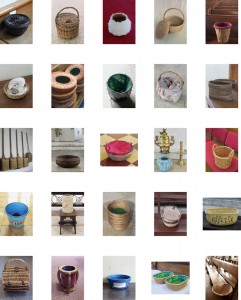 |
| Collection #01 | Collection #02 | Collection #03 |
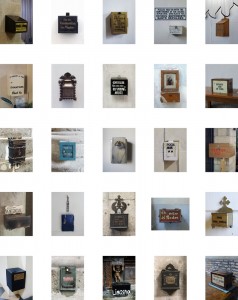 |
 |
 |
| Collection #6 | Collection #7 | Collection #13 |
 |
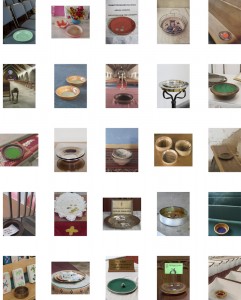 |
 |
| Collection #27 | Collection #33 | Collection #35 |
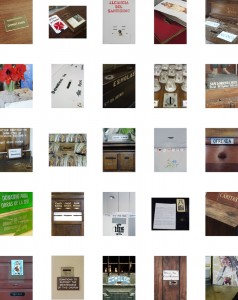 |
 |
 |
| Collection #42 | Collection #57 | Collection #60 |
“Colligation” series
م€ŒOfferingم€چمپ®éپ“ه…·مپŒ مپم‚Œمپ®مپ‚م‚‹و•™ن¼ڑمپ®وƒ…و™¯مپ¨ه…±مپ«و’®ه½±مپ•م‚Œمپ¦مپ„م‚‹م‚·مƒھمƒ¼م‚؛مپ§مپ™م€‚
In the “Colligation” series the “Offering” utensils have been photographed as a visual scene within the church.
وٹ€م€€و³•ï¼ڑمƒ‡م‚¸م‚؟مƒ«مƒ—مƒھمƒ³مƒˆ
用م€€ç´™ï¼ڑi-مƒ•م‚©مƒˆمپ‹مپچمپں
mediumï¼ڑphotograph(digital print)
paperم€€ï¼ڑi-photo Kakita
editionï¼ڑ8
“Colony” series
م€ŒOfferingم€چمپ®éپ“ه…·مپŒ مپمپ“مپ«مپ„م‚‹ن؛؛م€…مپ¨ه…±مپ«و’®ه½±مپ•م‚Œمپ¦مپ„م‚‹م‚·مƒھمƒ¼م‚؛مپ§مپ™م€‚
In the “Colony” series the “Offering” utensils have been photographed with the people present.
وٹ€م€€و³•ï¼ڑمƒ‡م‚¸م‚؟مƒ«مƒ—مƒھمƒ³مƒˆ
用م€€ç´™ï¼ڑi-مƒ•م‚©مƒˆمپ‹مپچمپں
mediumï¼ڑphotograph(digital print)
paperم€€ï¼ڑi-photo Kakita
image sizeï¼ڑ428أ—316mm sheet sizeï¼ڑ448أ—336mm
editionï¼ڑ8
 |
 |
 |
| Colony #1 | Colony #2 | Colony #3 |
 |
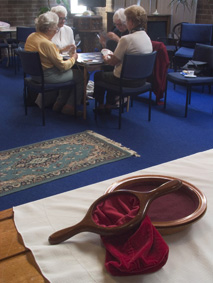 |
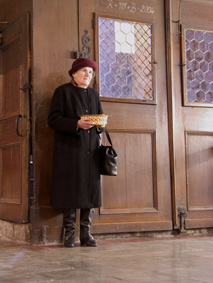 |
| Colony #4 | Colony #5 | Colony #6 |


